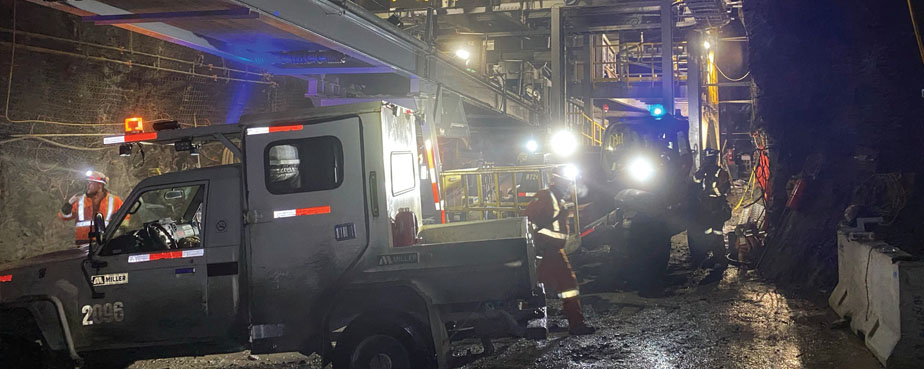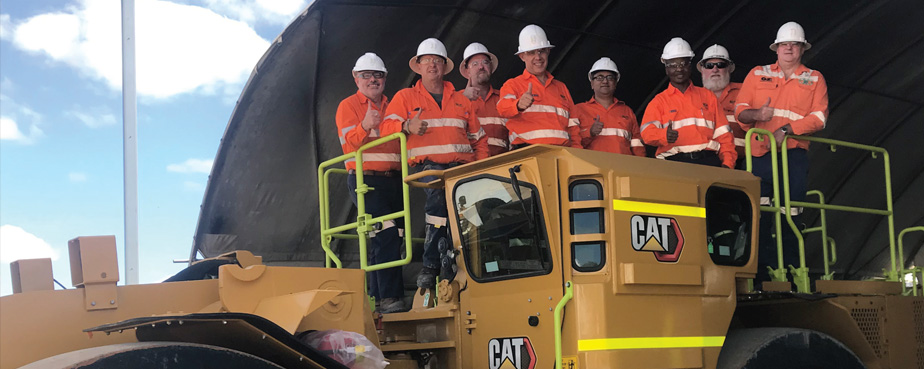BUSINESS PLATFORMS - UNDERGROUND MINING

NEWMONT MUSSELWHITE PROJECT ATTRIBUTES ITS SUCCESS TO COLLABORATION
Cementation Canada and Terra Nova Technologies have successfully completed their first joint venture, working as a consolidated team on the Newmont ConRamp Conveyor Project. The project is located at Musselwhite gold mine, 500km north of Thunder Bay in Ontario, Canada.
Work on the project entailed replacing the main ConRamp conveyor system, as well as a general replacement “in kind” which included working on safety and performance enhancements requested by Newmont.
Cementation Canada and Terra Nova Technologies were responsible for the engineering, procurement and construction (EPC) work on this project. The integrated EPC team allowed for seamless delivery and, in so doing, reduced the time and costs that were projected for the job’s completion.
For the engineering part of the job, a variety of equipment was used, including conveyor tables and associated components, as well as main conveyor drives, conveyor pulleys, a transfer tower between the two conveyors, a prefabricated electrical room, gravity take-up units and overall system integration.
A three-dimensional (3D) model of the conveyor layout design was presented to the client to assist in their approval of the final design. It also provided a visual representation for the construction crews to better understand the site layout and construction requirements. A 3D Lidar scan during the early phases of construction optimised the elevation of the conveyor tables and the associated curvature of the system, ensuring no interference between the wall and conveyor tables during final installation.
A system to monitor the temperature of the conveyor idlers and bearings was also installed. The system provides an early indication of when the idlers and bearings are compromised in their performance. It consists of four fibre optic cables, running along the length of the conveyor and close to the bearings for quick sensing.
Site activities were suspended for two months because of the outbreak of COVID-19, although the engineering and procurement work continued remotely. Despite the time pressures and disruption brought on by the pandemic, the project was delivered safely and on time, with no lost-time injuries.

RUC CEMENTATION MINING IS DEVELOPING THE DIGITAL MINE
The mining industry is one of the last to be disrupted by technology. However, many companies are in the process of embracing Industry 4.0 technologies such as data analytics, virtual and augmented reality, and automation.
Barry Upton, managing director of RUC Cementation Mining, leads the company’s digitalisation initiatives. Says Barry: “I have more than 40 years’ experience in the industry and I’m always interested in testing new ideas to improve productivity, efficiency and safety across our operations.”
RUC implemented an industry first with whole-of-mine, whole-offleet asset tracking. This not only improved safety outcomes but also allowed RUC to better utilise its heavy equipment.
The company engaged MineTech to implement a vehicle tracking system, which significantly improved trucking efficiencies. Vehicle tracking provided an advanced understanding of asset location which enabled a free-flowing underground haulage route with no obstructions. This resulted in improved productivity, accurate tracking and data, and improved driver visibility and safety.
RUC’s technology partnerships provide mutual benefits, as Barry explains: “Technology companies often have great products but nowhere to test them. We provide an opportunity for them to test in a real-world environment, and in return we get a first look and input into cutting-edge technology, with the option of being an early
adopter of the technology.”
Technology partnerships are also collaborative, especially when it comes to developing new software, databases and analytics.
The next stage of RUC’s digitalisation strategy centres on obtaining real-time performance data from the company’s assets. “Our priority is to predict when equipment is operating out of normal range and to prevent unplanned breakdowns through reliability engineering based on known data,” concludes Barry.
With over 2 300 employees, RUC has operations across the Asia- Pacific region, including in countries such as Kazakhstan, Mongolia, Hong Kong, Indonesia, Australia and New Zealand.

